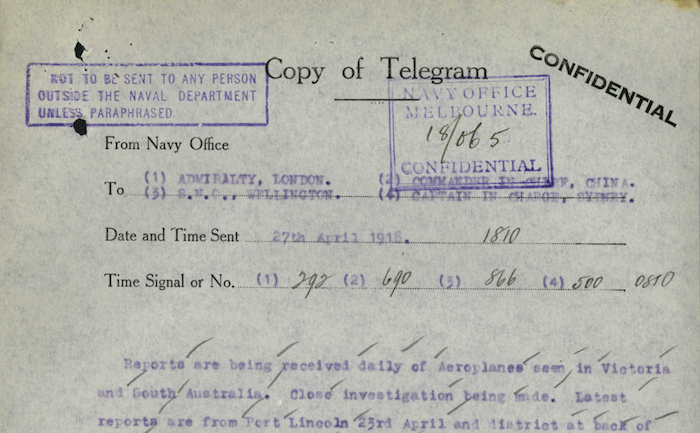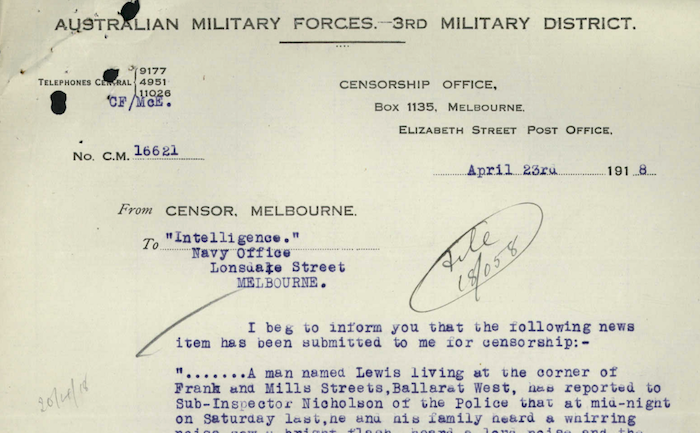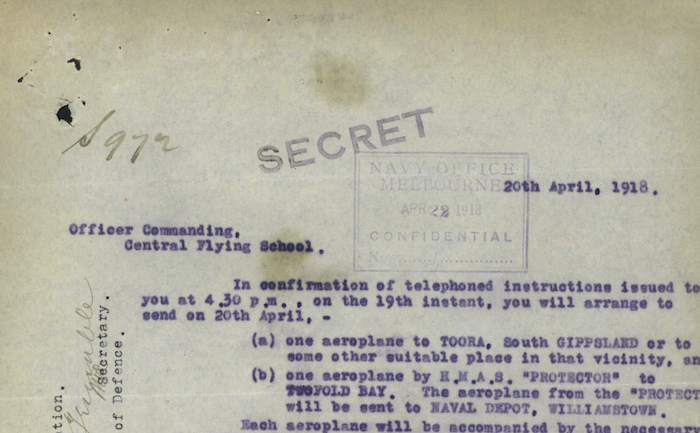
NAA: MP1049/1, 1918/066, pages 491 and 492 is a letter from Major E. L. Piesse, Director of Military Intelligence, to the Navy Office, informing them of the progress of the Army's aerial reconnaissance of south Gippsland. Unfortunately,
The aeroplane used in this reconnaissance has been unserviceable since 24th inst. No information has yet been received as to when this aeroplane can fly again.
More interestingly (and the reason why I cite this in my article), Piesse includes extracts from the reports made by 'the O/C [Officer Commanding] Air Reconnaissance' (Captain Frank McNamara VC), who apparently has not been given any detailed instructions as to what he should be looking for and accordingly has come up with his own criteria. Over the sea, the general idea is to 'Examine decks of all boats which may be capable of carrying a seaplane'. The bigger the vessel the more attention it receives:
- 'Fishing craft': report location only
- 'Small steamers or wind propelled craft': 'Report time, position, direction of steering, description'
- 'Ships of higher tonnage': as above, 'but examine more closely, particularly the decks'
Any ships passing in sight of the Wilson's Promontory lighthouse will be reported 'and when AEROPLANE-SHIP RECOGNITION SIGNAL has been arranged there will be an additional check'. If the enemy is sighted, then
Upon seeing hostile ship, aeroplane, or submarine, we will be able to convey information rapidly to ground station or ship, provided the distance is not beyond range. (A W/T set is being got ready to fit to the machine).
In the case of 'Floating mines', 'action taken, time, position' would be reported. In the case of 'Hostile aircraft', 'Engagement with which would be reported on COMBAT-IN-THE-AIR REPORT' (!) Finally, a lookout is being kept for 'SIGNALLING by persons of enemy sympathy', whether to 'hostile ships' or 'hostile aircraft', paying close attention to 'changes in the distribution of smoke fires' and 'ground on which [signal?] strips etc. could be seen from the air'. So these ad hoc criteria tell us what the airmen, at least, were looking for. It's interesting that submarines are mentioned, as these have previously been mentioned in connection with the aerial reconnaissance; but there are one or two phantom ones lurking about.
...continue reading









